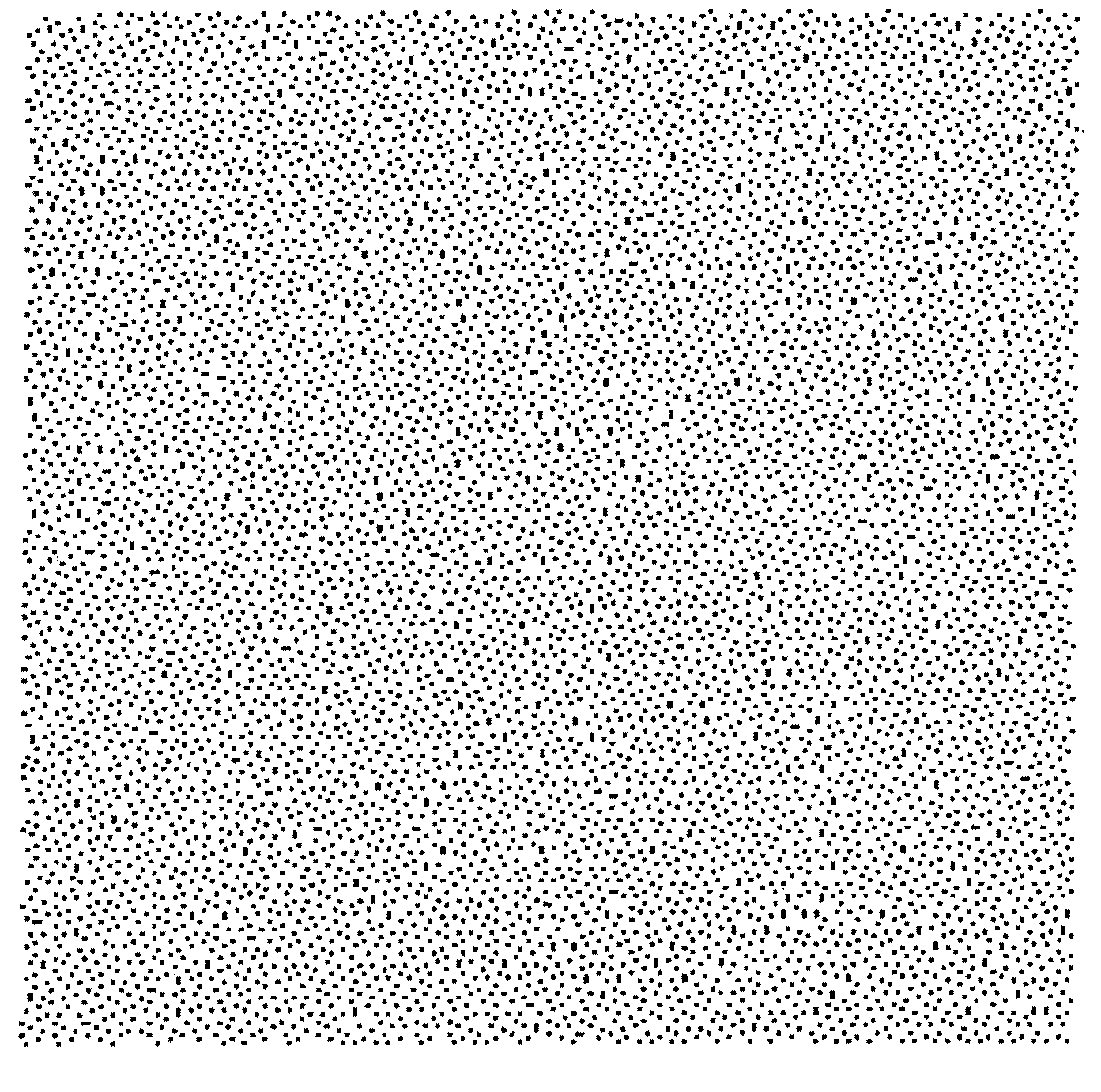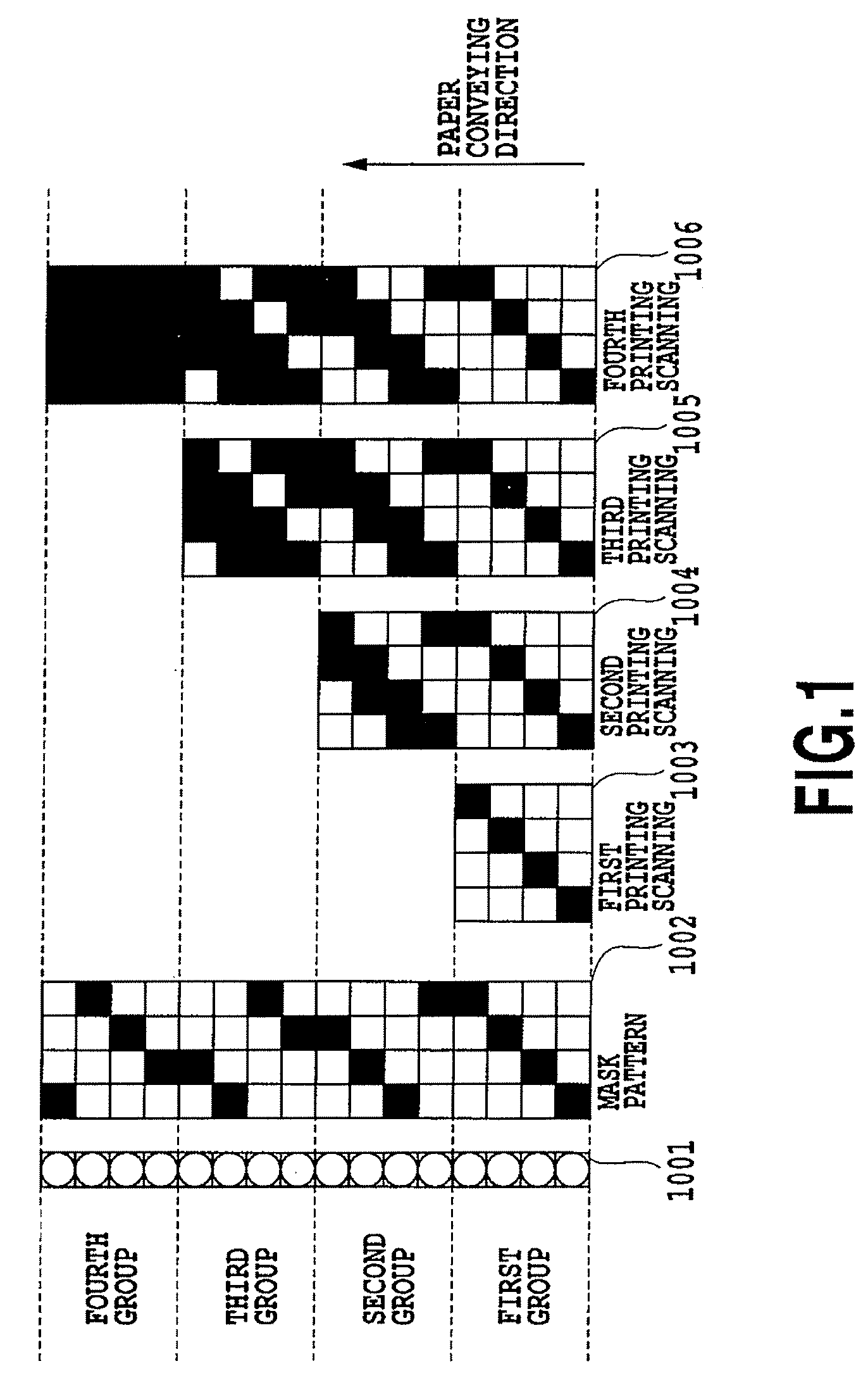Data processing apparatus, printing apparatus and method of creating mask pattern
a data processing apparatus and mask pattern technology, applied in the direction of digitally marking record carriers, visual presentation using printers, instruments, etc., can solve the problem of granularity, the amount of paper conveyed during an interval between printing scanning periods may include a mechanism error, and the ejecting direction and the volume of ejecting ink are not easy to predict. the effect of reducing the interference of a dot arrangement pattern and dispersibility of the dot arrangemen
- Summary
- Abstract
- Description
- Claims
- Application Information
AI Technical Summary
Benefits of technology
Problems solved by technology
Method used
Image
Examples
embodiment 1
sk for Two Pass Printing
Summary of the Embodiment
[0138]This embodiment relates to multi-pass printing of two-pass in which an image is completed by twice of scanning by using one print head equipped with a nozzle array ejecting cyan (C) ink as a printing element. A mask used for the two-pass printing has a pattern whose interference with a dot arrangement pattern is reduced and which is well dispersed. This prevents dots formed by each scanning from being unevenly distributed in number. Furthermore, since dots are dispersedly formed in each scanning, even if there is a deviation of printing position for example, texture that may be caused by the deviation is visually unobtrusive, thus suppressing adverse effects on image quality.
[0139]FIG. 8 is a diagram schematically showing mainly the positional relationship of a print head, a mask pattern and a print medium in order to illustrate two-pass printing. A print head 801 is equipped with a nozzle array of cyan ink which includes 512 no...
embodiment 2
sk for Four Pass Printing
Summary of the Embodiment
[0178]A second embodiment of the present invention relates to pattern-considered-type layer masks used for multi-pass printing of four-pass that completes an image by four times of scanning (twice of reciprocating scanning) for each of cyan (C), magenta (M) and yellow (Y) inks. In the masks of this embodiment, the interference between each mask and the dot arrangement pattern obtained by index data is reduced likewise as in the first embodiment and the interference between the mask and other masks is also reduced. This especially can reduce the occurrence of beading formed by aggregation of ink droplets ejected during a plurality of scanning.
[0179]In this embodiment, the order of printing is first-pass for cyan, first-pass for magenta, first-pass for yellow, second-pass for yellow, second-pass for magenta, second-pass for cyan, third pass for cyan, . . . , forth-pass for cyan. According to this order, the order of masks to be used is...
embodiment 3
on Mask for Two-Pass Printing
[0200]A third embodiment of the present invention relates to reducing the interference or increasing dispersibility between a gradation mask and a dot arrangement pattern in the case of using the gradation mask. Specifically, likewise as above-mentioned embodiments, repulsive potential between the gradation mask of this embodiment and the dot arrangement pattern is calculated to determine the arrangement of print permitting pixels.
[0201]FIGS. 36A and 36B are views respectively showing the print ratio (ratio of print permitting pixels arranged in a predetermined region) corresponding to nozzle positions of a gradation mask and a mask pattern thereof for two-pass printing. In this embodiment, the number of print permitting pixels that meet the print ratio corresponding to each nozzle number is arranged. The planes of dot arrangement patterns to be considered for calculating repulsive potential are four planes P1, P2, P3 and P4 shown in FIG. 12, likewise as...
PUM
 Login to View More
Login to View More Abstract
Description
Claims
Application Information
 Login to View More
Login to View More - R&D
- Intellectual Property
- Life Sciences
- Materials
- Tech Scout
- Unparalleled Data Quality
- Higher Quality Content
- 60% Fewer Hallucinations
Browse by: Latest US Patents, China's latest patents, Technical Efficacy Thesaurus, Application Domain, Technology Topic, Popular Technical Reports.
© 2025 PatSnap. All rights reserved.Legal|Privacy policy|Modern Slavery Act Transparency Statement|Sitemap|About US| Contact US: help@patsnap.com



